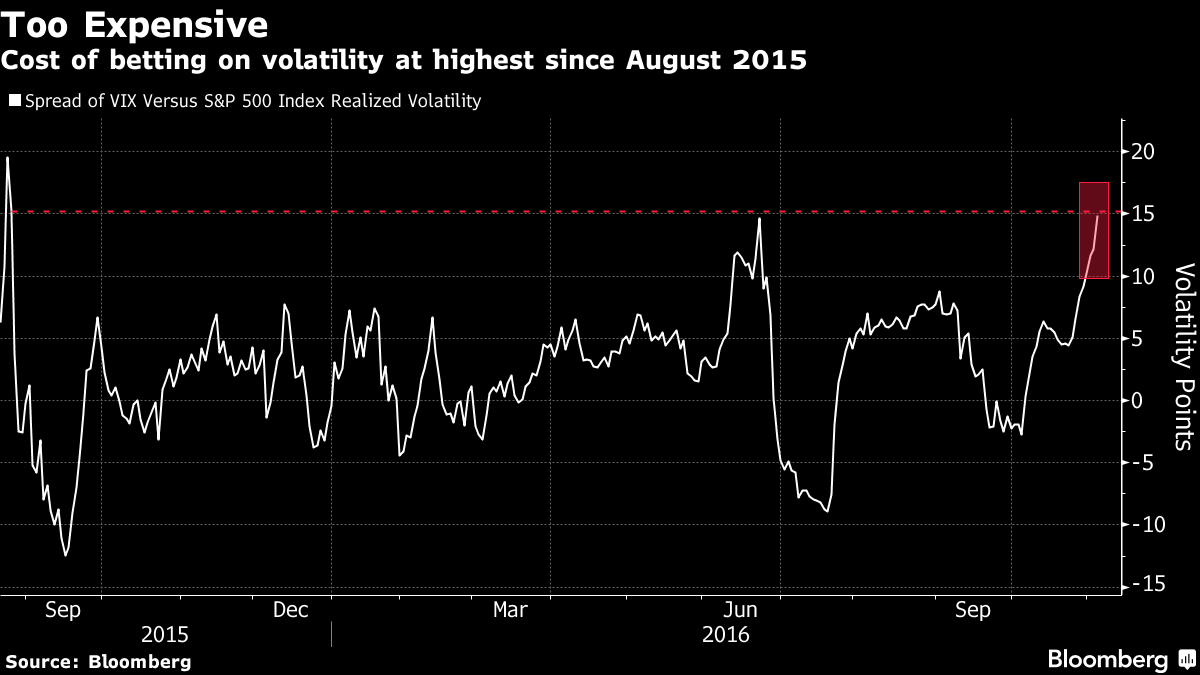
Volatile Election Not Volatile Enough for the Man Who Trades Chaos
VIX up for eight straight days, longest streak since 2013
'Mean reversion' suggests volatility index will come back down
While stock investors are growing anxious before the U.S. presidential election, betting on equity volatility has become the most expensive in more than a year. Huakun Ding says the next big opportunity may be to wager on the market calming back down.
Ding, the chief investment officer at Toronto-based firm Goldenwise Capital Management, says the risk-reward isn’t attractive enough now to bet on more equity turbulence. The CBOE Volatility Index (VIX) (VXX), which tracks swings in the S&P 500 Index (SPX) (SPY), has reached its highest level since August 2015 relative to actual moves on the equity gauge, indicating options prices have become costly.
The VIX climbed for eight days and equities posted their longest streak of losses since 2008 as the gap between candidates Hillary Clinton and Donald Trump narrowed. Since the Federal Bureau of Investigation reopened its investigation into the Democratic nominee’s e-mails, investors crowded into hedges protecting against a market selloff. The VIX closed at 22.08 on Thursday and was little changed on Friday at 11:52 a.m. in New York.
“We are waiting for the right moment to step in,” Ding said. “If Trump wins, the room for a VIX spike is limited. If Trump loses, the VIX has big downside potential.”
The VIX last reached 25 on June 24, the day after the U.K. referendum on European Union membership. The jump didn’t last -- it slumped a record 43 percent the next week. That’s a trend known to traders as “mean reversion,” suggesting that the indexes or prices tend to go back to their average after spiking. As of Thursday’s close, the VIX’s level was higher than its historical mean of 19.71.
Goldenwise isn’t betting on the outcome of the vote. Rather, it’s waiting to exploit the price distortions that occur when swings intensify. Its quantitative model analyzes historical data, the uncertainty surrounding political events and statistics about volatility products to determine when things like VIX futures are overpriced or underpriced.
The firm has $120 million dedicated to its core strategy, which has returned about 8 percent this year through the end of October. That’s about twice as much as its peers, according to data compiled by Bloomberg. While Goldenwise also trades products linked to equity indexes, its current focus is the volatility market.
“We are waiting patiently for better opportunities,” Ding said. “We like a high volatility market with chaos.”
Courtesy of bloomberg.com
